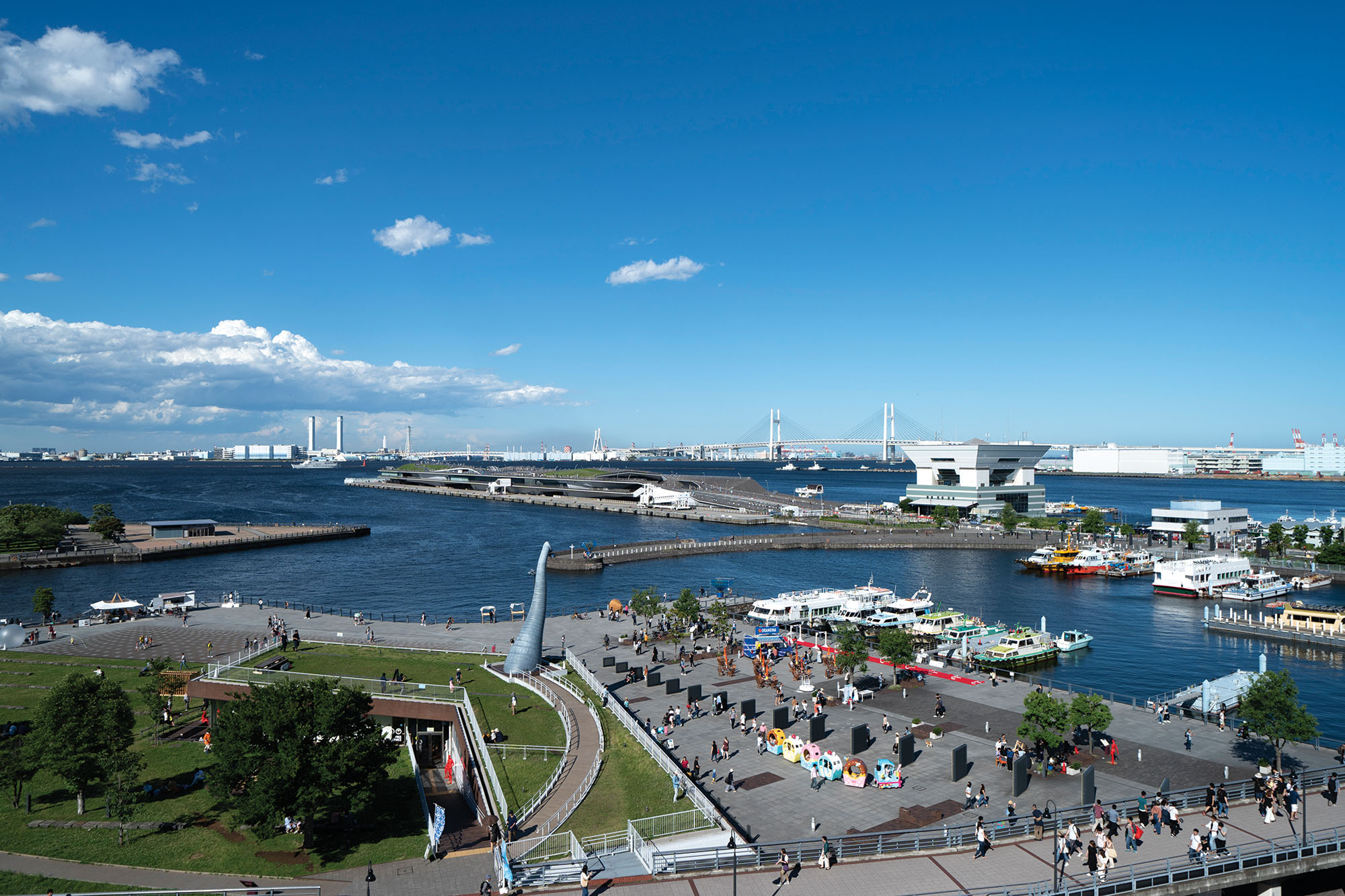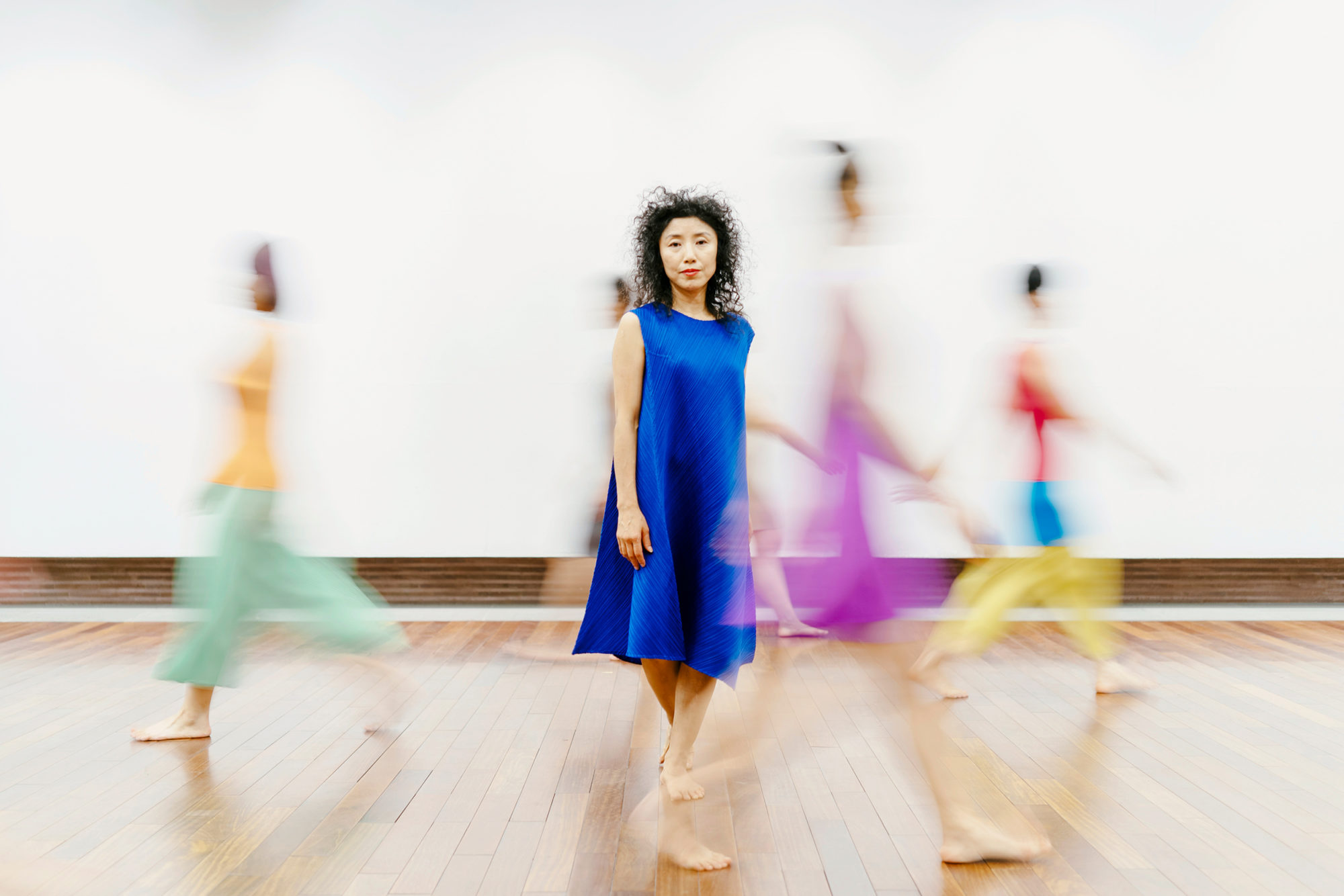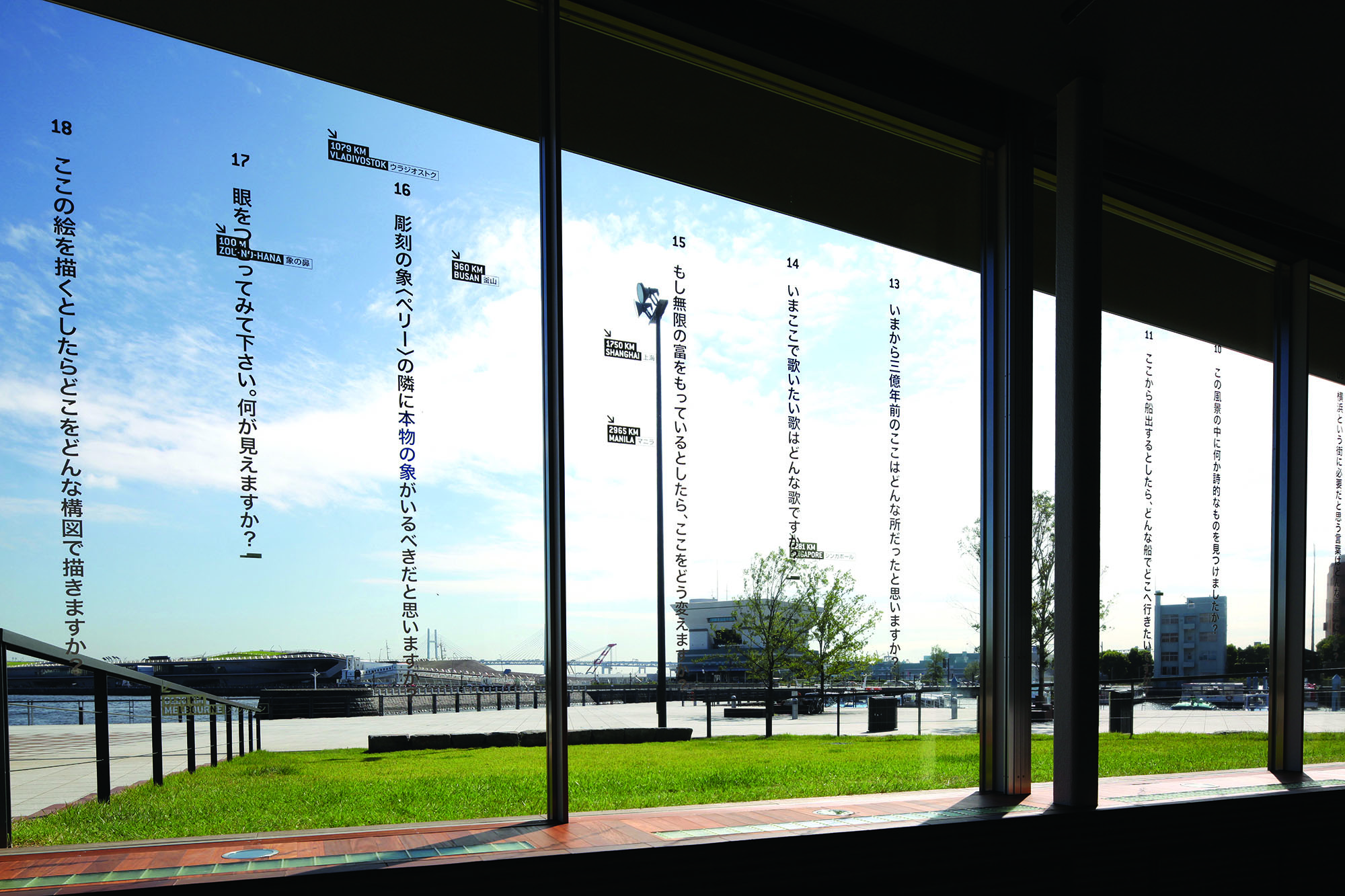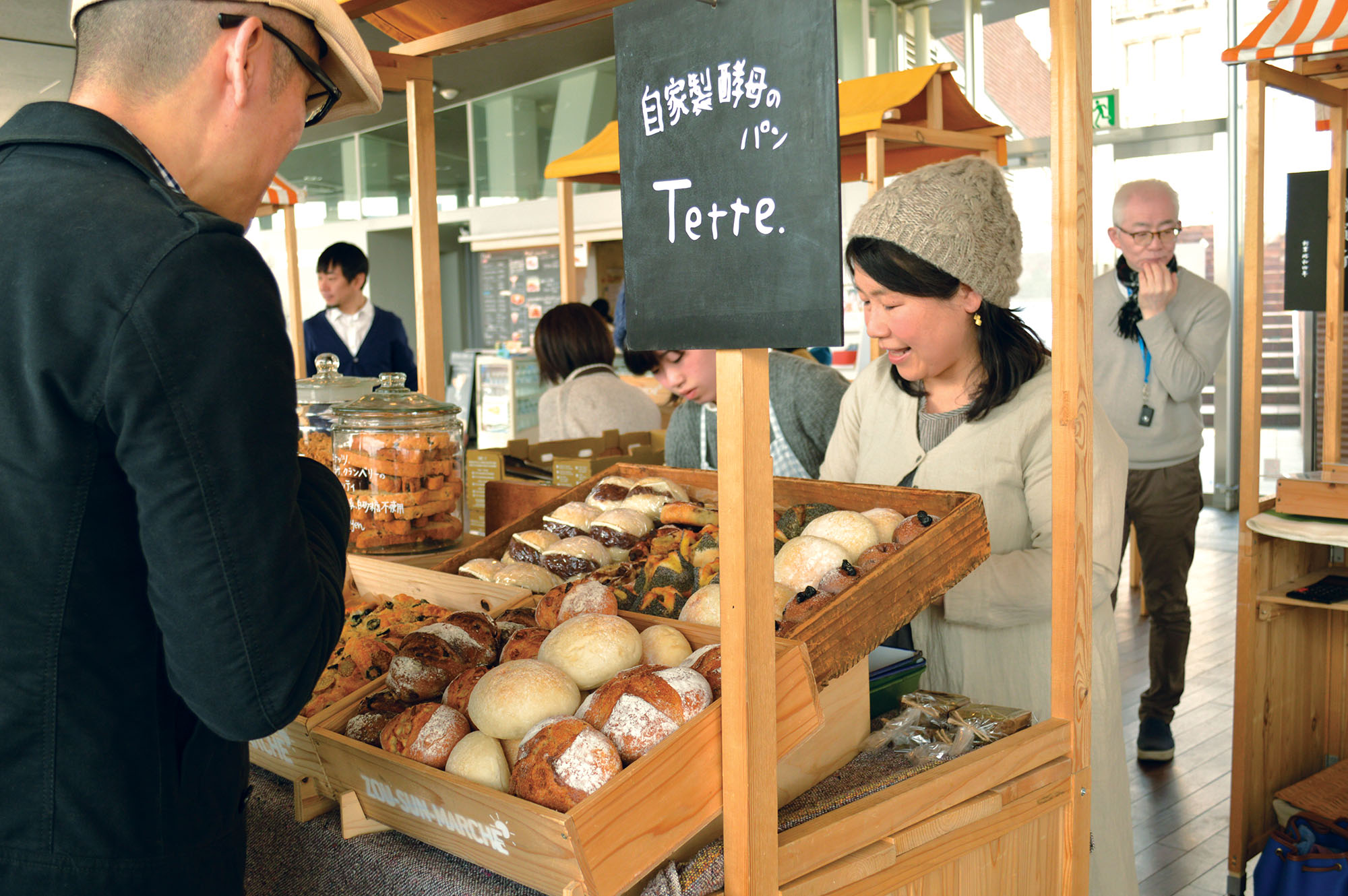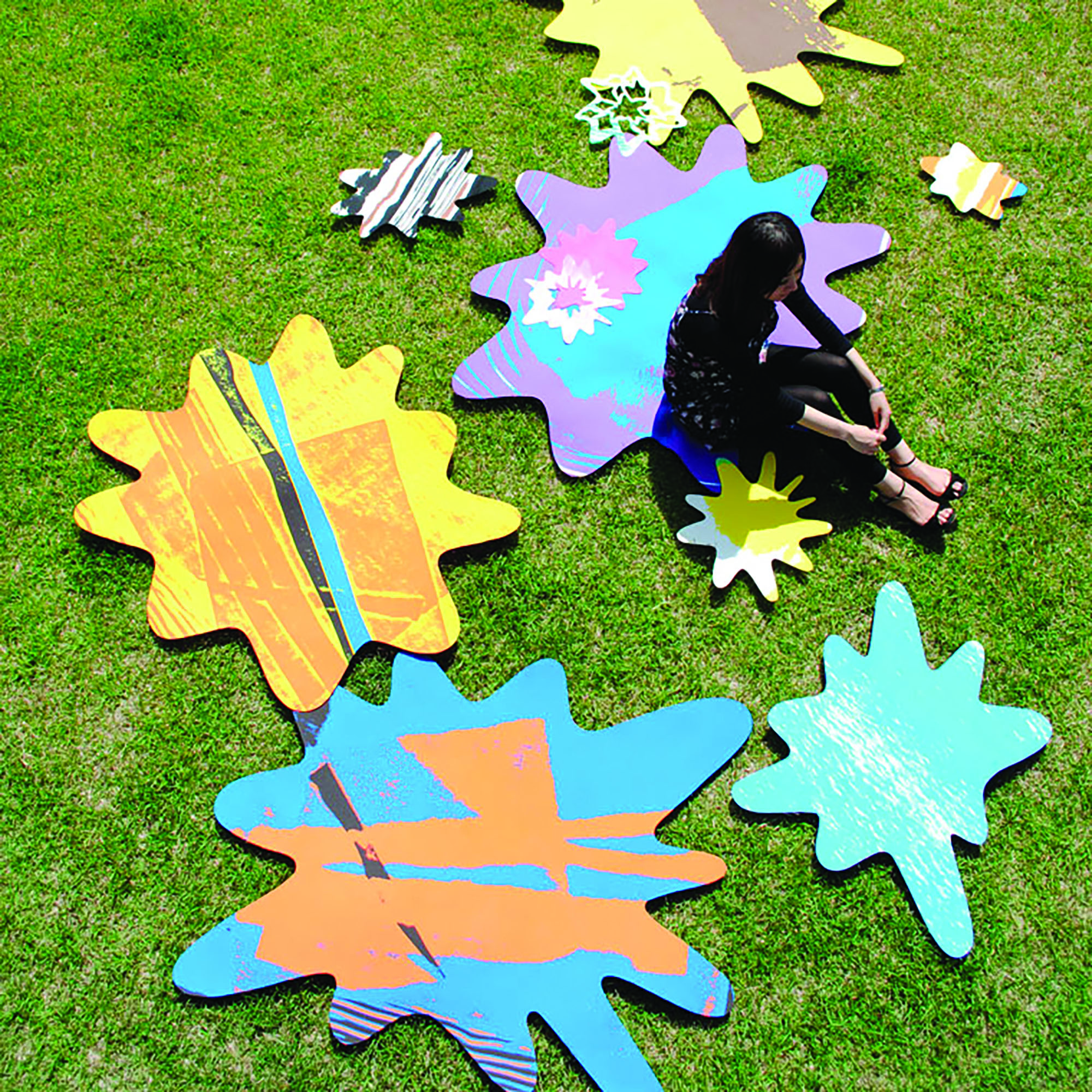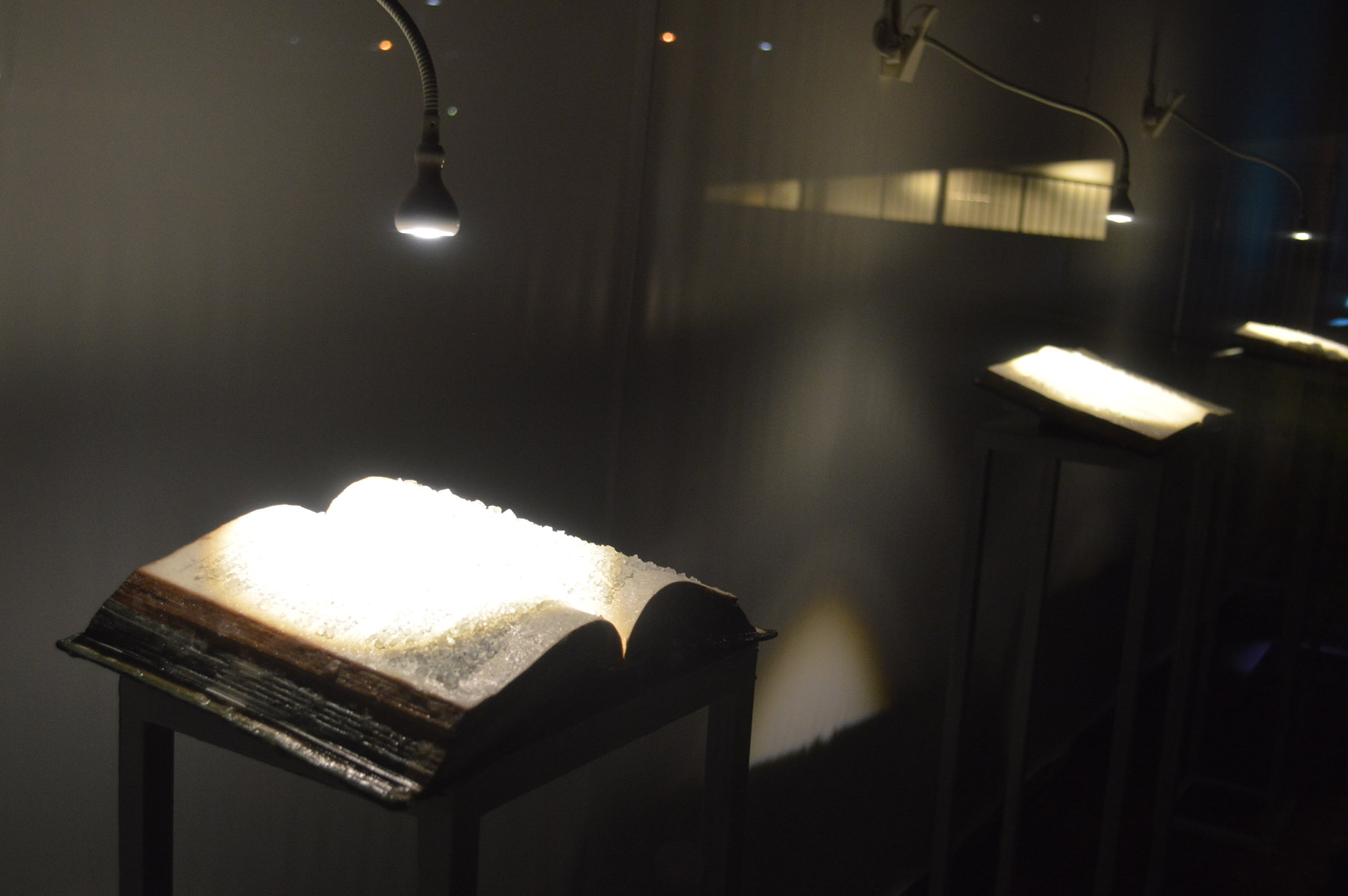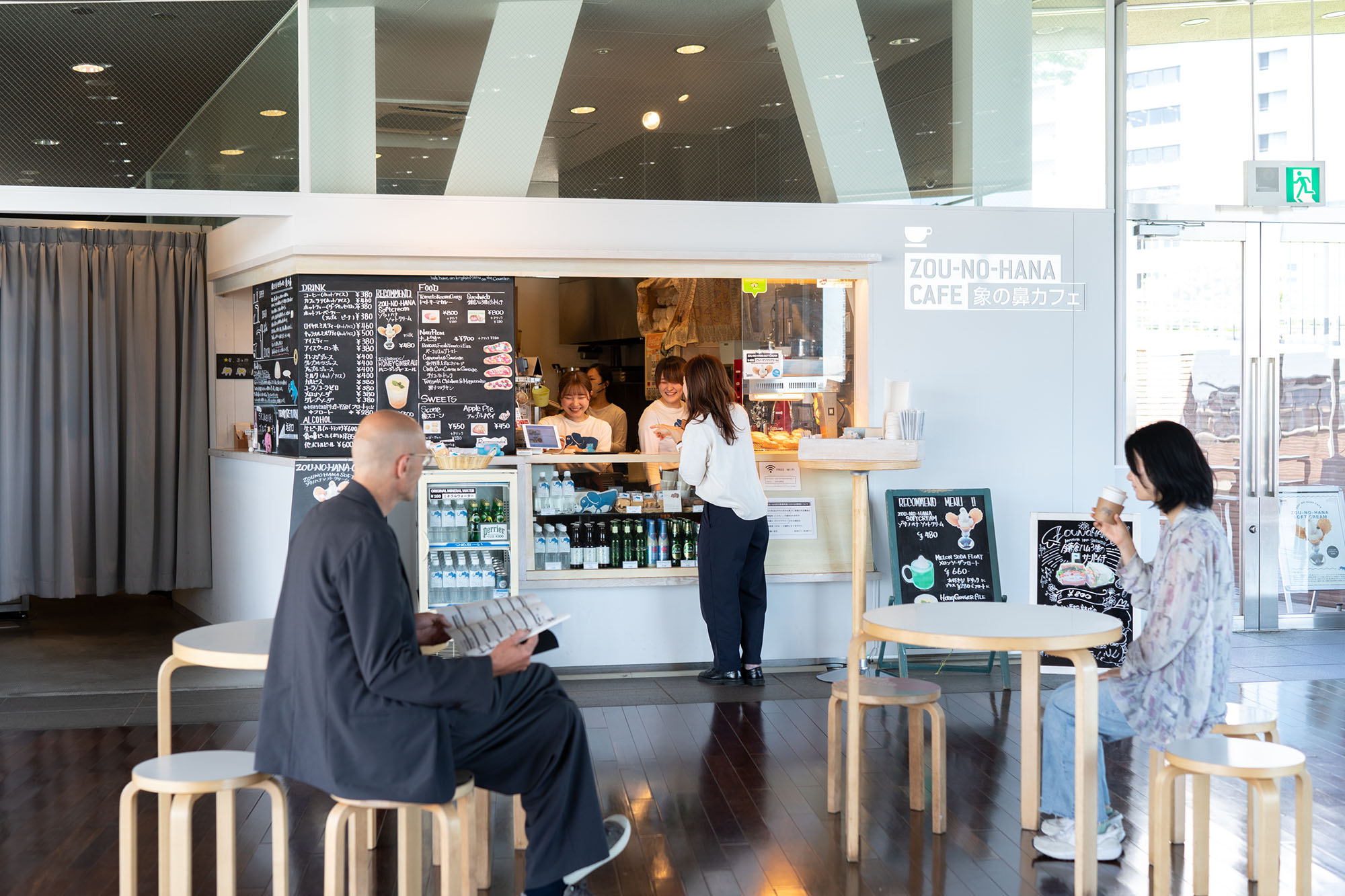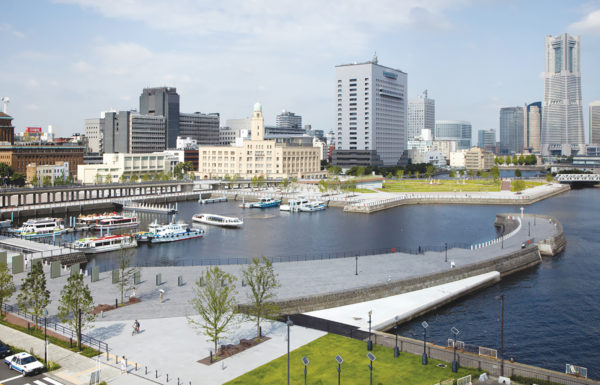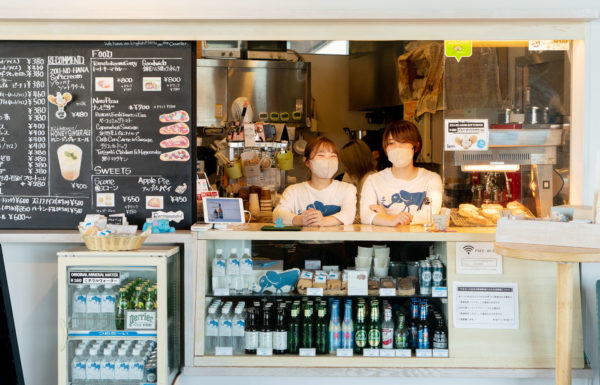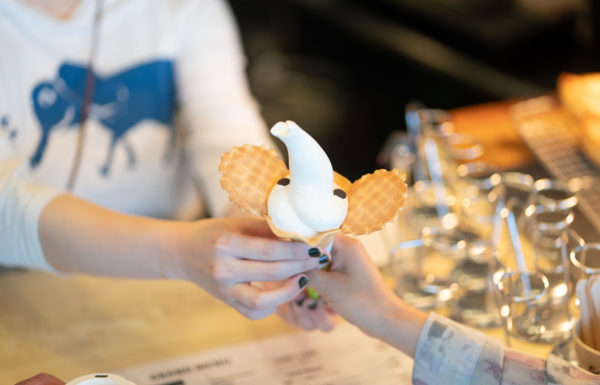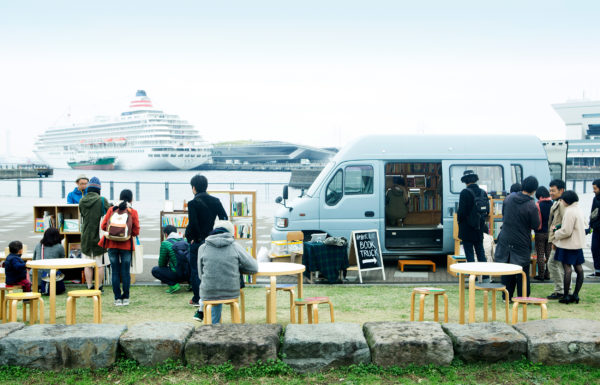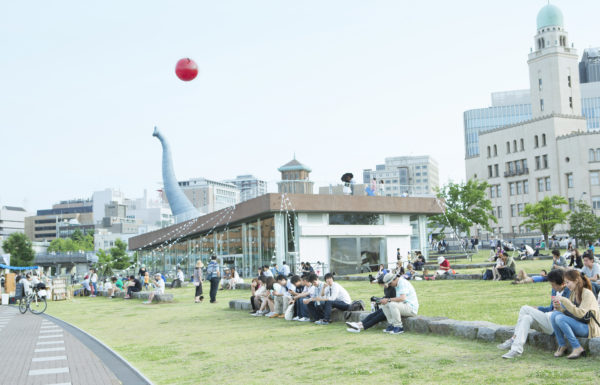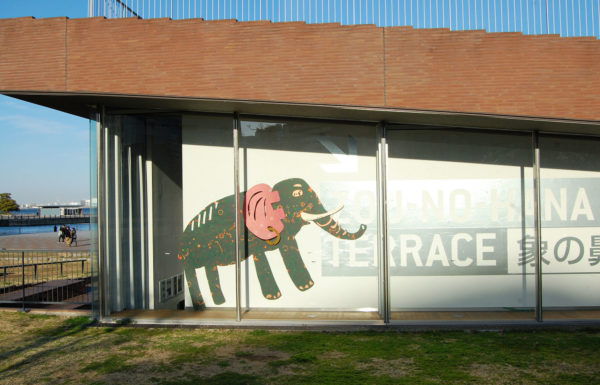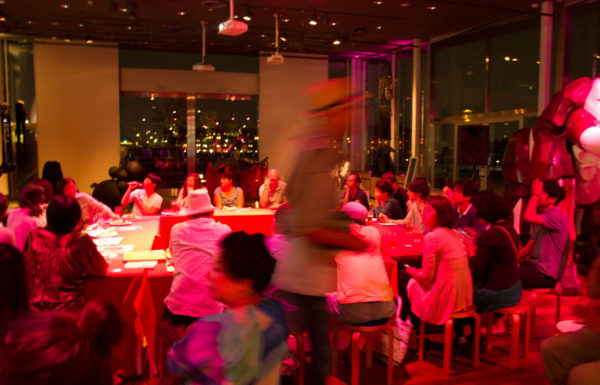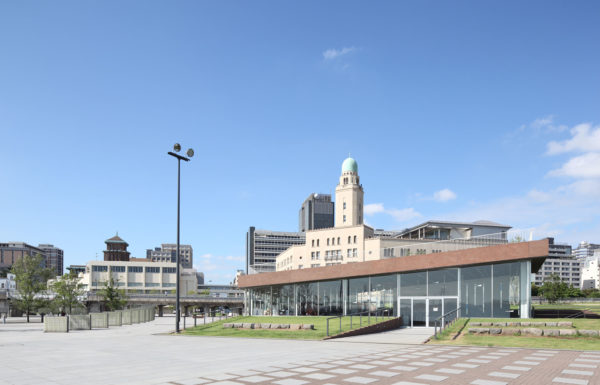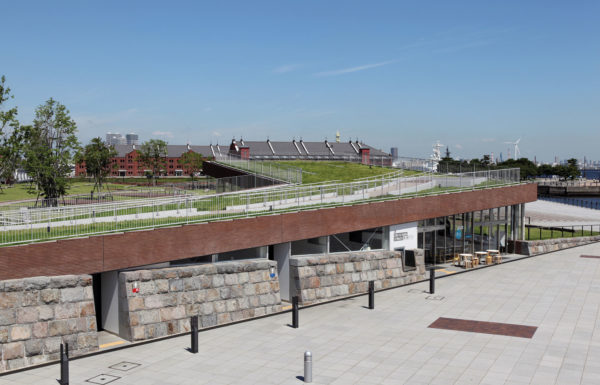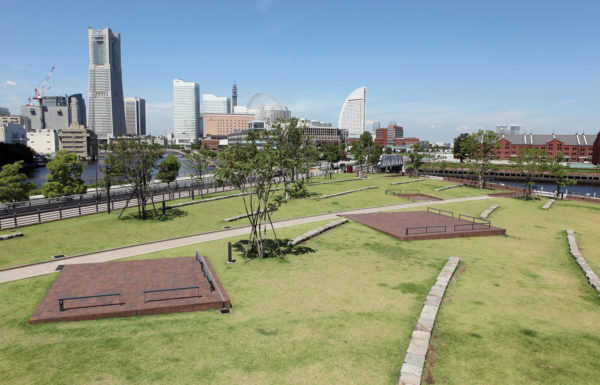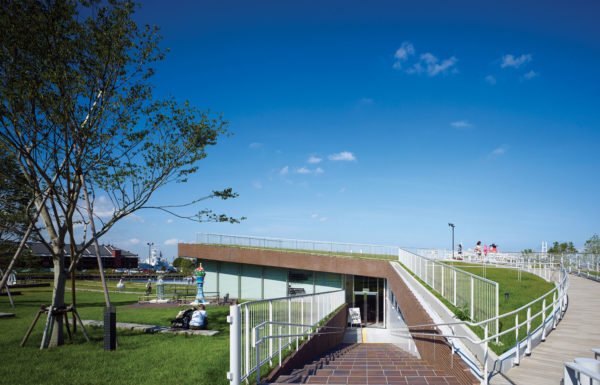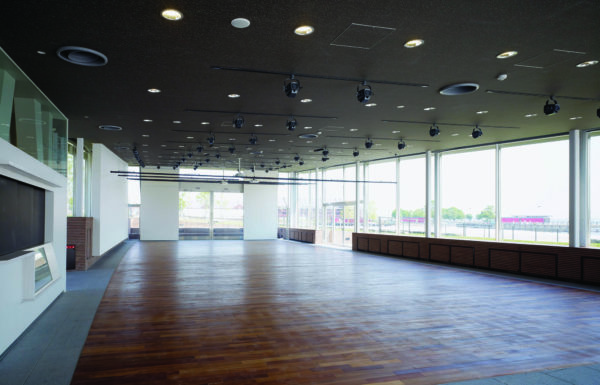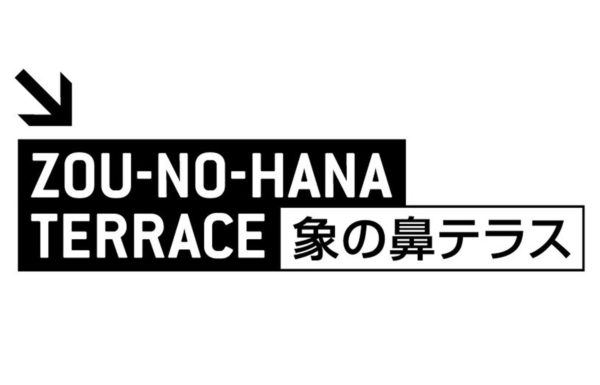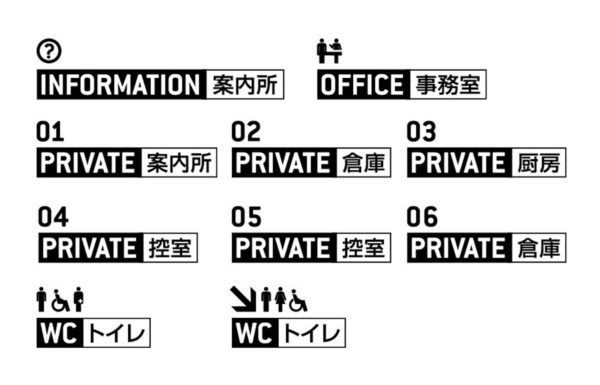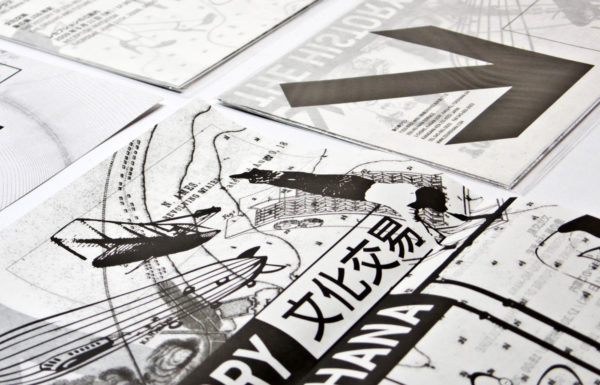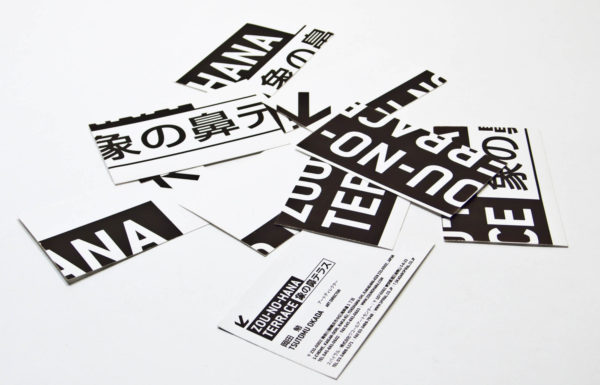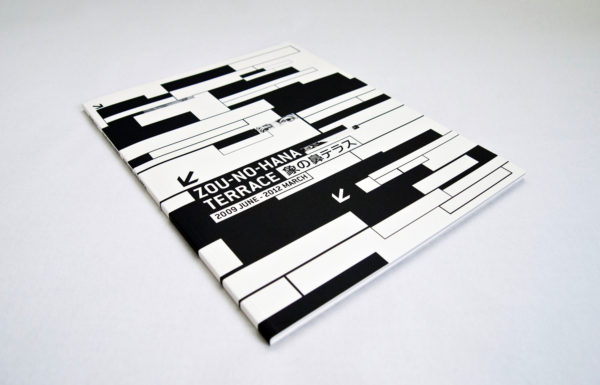Zou-no-hana Terrace is a free resting place in Zou-no-hana Park available to everyone. Featuring an art space and café, visitors can enjoy various kinds of art and other services.
OPEN 10:00-18:00
WELCOME TO ZOU-NO-HANA TERRACE:
A NEW CENTER FOR CULTURAL EXCHANGE
Zou-no-hana Terrace opened on June 2, 2009, as part of the celebrations marking Yokohama port’s 150th anniversary. Standing on the original site of the port, Zou-no-hana Terrace has symbolic significance as a link between the city’s past and future. Located inside Zou-no-hana Park, the terrace features an art space and café, and is one of the initiatives launched by Yokohama to promote culture and the arts in the city.
Since opening 150 years ago, the port has served as a place where various cultures have come into contact with each other. Zou-no-hana Terrace too aspires to be a place where different peoples and cultures can meet, and where connections and new culture can emerge, which it pursues through a wide-ranging program of art, performance, music, and more. The café serves food and drink in conjunction with these cultural programs.
ZOU-NO-HANA:
THE BIRTHPLACE OF YOKOHAMA PORT
Zou-no-hana Park stands on the spot where the United States naval officer Commodore Matthew C. Perry disembarked on his second visit to Japan on March 31, 1854. In 1859, after Yokohama was designated one of the five ports in the Treaty of Amity and Commerce between Japan and the U.S., the area became the first full-fledged wharf in Yokohama, facilitating brisk trade and commerce with other countries. The name, Zou-no-hana, derives from the shape of the nearby breakwater that gradually changed over the years and came to resemble an elephant’s trunk. The present-day breakwaters in the park are reproductions of structures dating from the late nineteenth century, many of which sank into the ocean due to the Great Kanto Earthquake of 1923. The park also contains display panels outlining the history of the site.
The terrace develops various projects to promote cultural diversity.
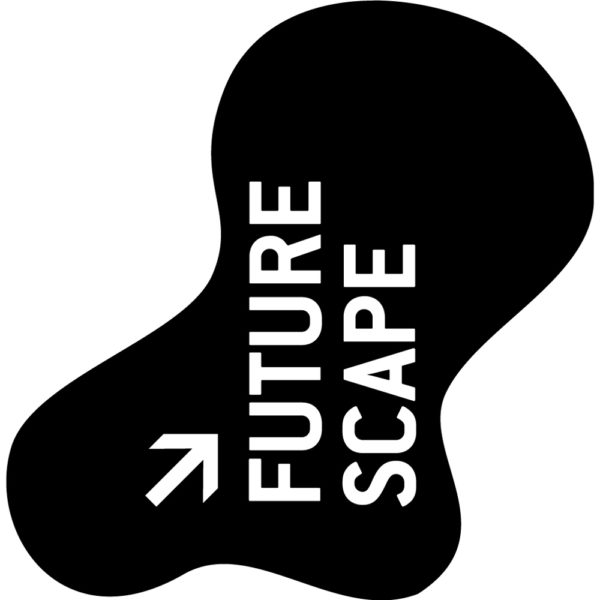
ZOU-NO-HANA FUTURESCAPE PROJECT
Social experiment project searching for new ways to use public space through the power of art
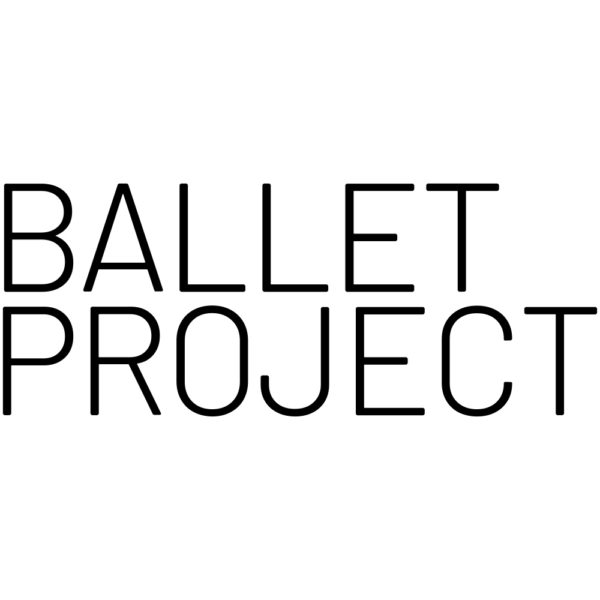
ZOU-NO-HANA BALLET PROJECT
Dance art project pursuing free forms of physical expression, from Yokohama to the world
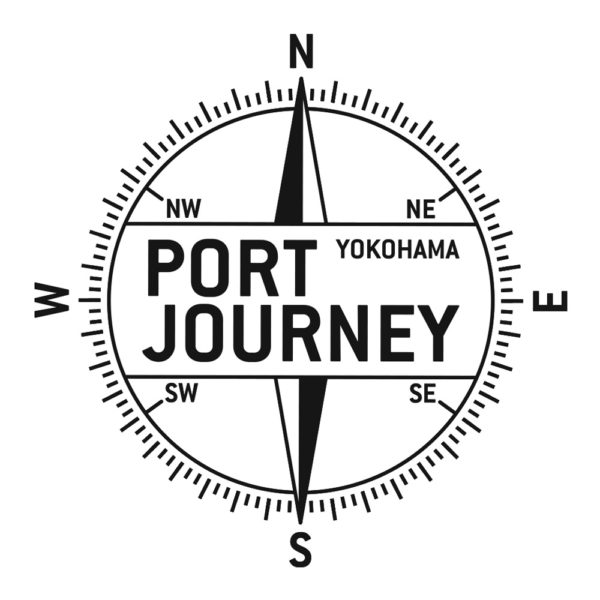
PORT JOURNEYS
Cultural exchange project in partnership with port cities around the world, aiming to promote creative urban development
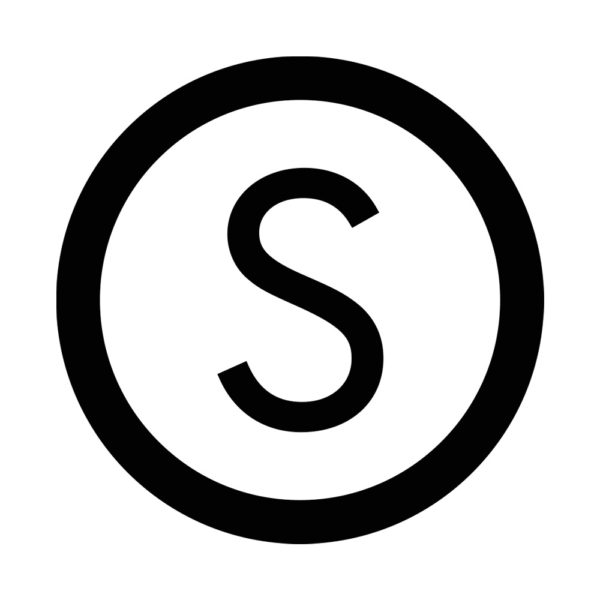
SLOW LABEL
Contributing to social diversity and inclusion through the power of art
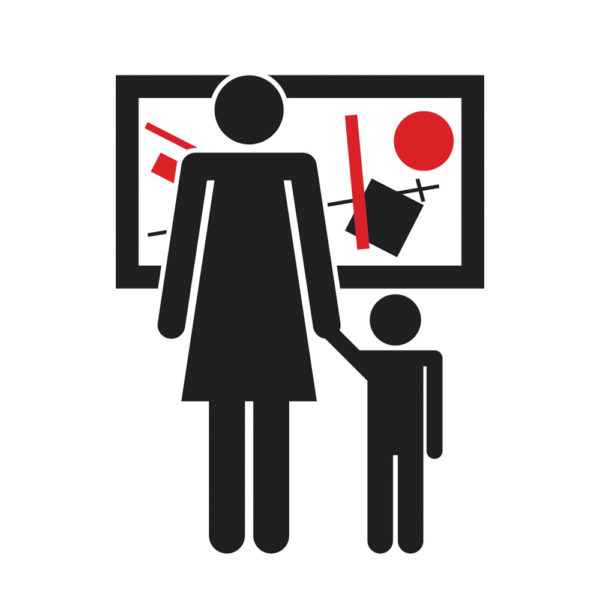
ZOU-NO-HANA GALLERY SERIES
Exhibitions with a focus on Yokohama-based artists

DANCE ENNICHI
Amateur dance performances in various styles and genres
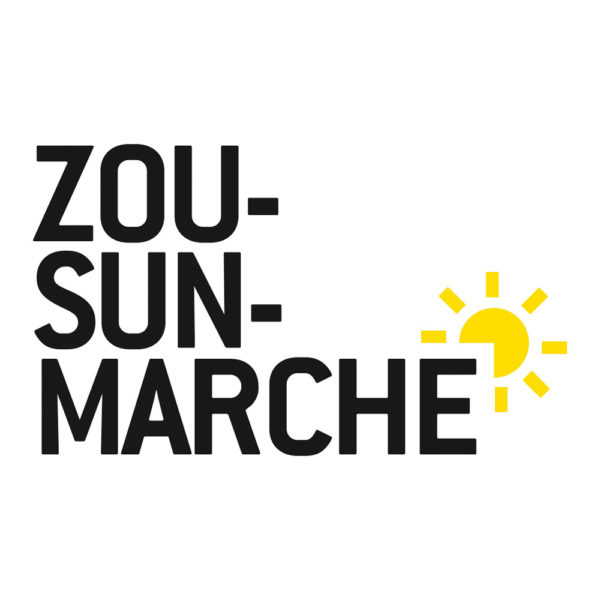
ZOU-SUN-MARCHE
Holiday markets at Zou-no-hana

ETB
Yokohama art tourism presented by Zou-no-hana Terrace
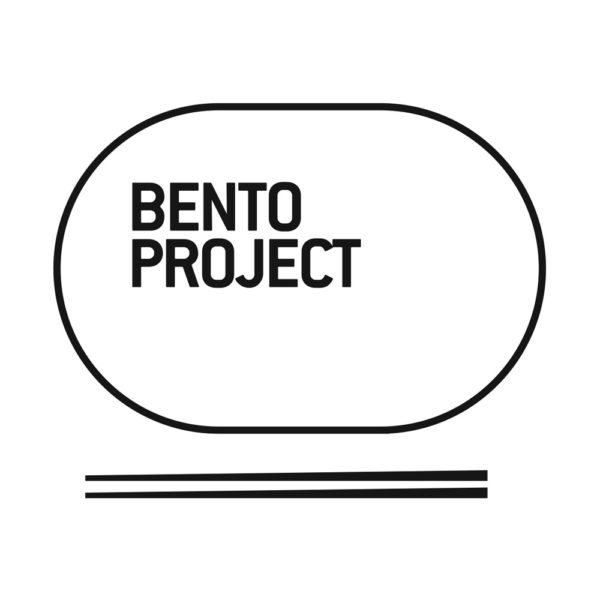
ZOU-NO-HANA BENTO PROJECT
Lunchbox-themed events held on the 10th of every month
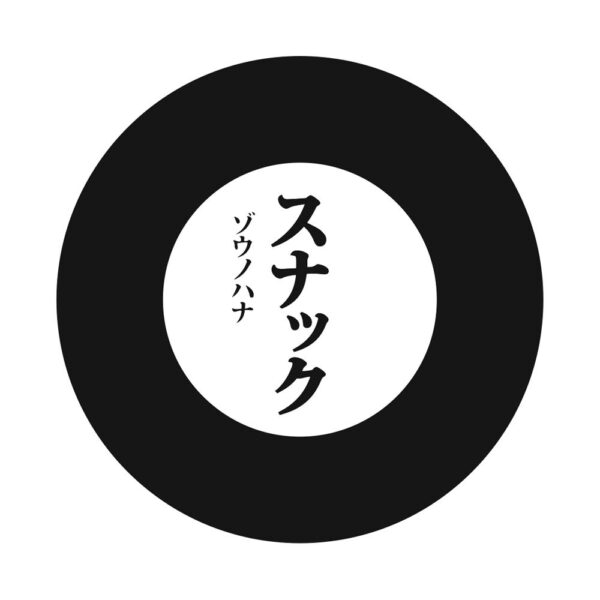
SNACK ZOU-NO-HANA
Exchange between artists and the public

ATELIER ZOU-NO-HANA
Workshops for children

OTHER PROJECTS
MESSAGE FROM ART DIRECTOR
Zou-no-hana Terrace opened in 2009 as a place for new cultural exchange and creativity as part of the commemorations marking 150 years since the port of Yokohama was established.
Zou-no-hana Park stands on a site with close connections to Yokohama’s history as a meeting place for Japan and other cultures from around the world, and which played a pivotal role in initiating the modernization of Japan. The essence of that heritage carries on today in Yokohama’s pursuit of creative forms of community development. Zou-no-hana Terrace is striving to realize those unique ambitions as a center for culture and creativity.
Based on the principle that artistic creativity is an effective means of improving a community, Zou-no-hana Terrace brings together artists to undertake various approaches and activities that explore fresh possibilities for the city. These ideas and practices give us inspiration and offer insights about Yokohama’s potential.
Putting our deep trust in the creative abilities of artists, designers, and the public, we endeavor to discover new values that can usher in a better future for Yokohama, Japan, and the whole world.
We hope you will continue to support our efforts.
2023 06.
Zou-no-hana Terrace
Art Director, Tsutomu Okada
ARCHITECTURE
The Zou-no-hana district (comprising Zou-no-hana Terrace and Zou-no-hana Park) was designed by the architect Masao Koizumi.
Zou-no-hana Park was opened to pay tribute to the origins of the port and create another spot for people in Yokohama to get the most out of the city. It includes reproductions of the Meiji-era breakwaters that once formed an elephant trunk shape as well as the wharf that maintains a scenic view of the port from Nihon-odori, and a lawn-covered hill that offers a panorama of the port and sea. Panels in the park change color at different times at night, transforming the location into a charming place for visitors to enjoy the waterfront and view of the city.
Located on the hill, Zou-no-hana Terrace is designed to blend seamlessly into the landscape, half submerged into the ground so as not to block the view of Yokohama’s three towers. It aims to function as an information center befitting its location so rich in history and culture.
AWARDS
2009 Urban Design Movement Sight Scape Award
2010 Kanagawa Architecture Contest Award of Excellence; Urban Landscape Award for Urban Space (Yokohama City, Wacoal Art Center, Nihon-Odori Revitalization Commission)
2012 AACA Award
2016 14th Environmental and Equipment Design Award First Prize
FACILITY
Total floor area: 604.04m2
Structure: S-1/0
Ceiling height: 2.2 – 5.13m
Exterior finishings: exposed concrete, ashlar masonry of Komatsu stone, brick tiles
Completed: May 2009
ARCHITECT: MASAO KOIZUMI
Architect/Partner at Koizumi Atelier/Professor at Tokyo Metropolitan University, Dr. Eng.
Koizumi’s main works in Yokohama include: ZOU-NO-HANA Park & Terrace (2009), Koganecho New Studio Site-D (2011), Konan synthesis government building(2017), Kotobukicho, Yokohama-shi health welfare interchange center/Municipal housing Kotobukicho sky apartment house(2019) and among his literary works are: “Planning method for LCCM Demonstration House”, “Text of Public space”,“Housing Planning and Environmental Design”,“CLIMA DESIGN”,“Essays on Environmental Architecture~Towards a new modern architecture”.
CORPORATE DESIGN
Zou-no-hana’s corporate design is by so+ba. Consisting of black and white blocks, the logo is designed to allow for additional modules as further projects are pursued in the future, without compromising the branding consistent across Zou-no-hana Terrace’s activities and publicity. Inspired by the site’s location in Yokohama’s port, long a place for cultural exchange, the arrows simultaneously express arrival and departure, while the contrasting use of color and English and Japanese represent the coming together of opposites.
so+ba
The Swiss design unit so+ba was founded in Tokyo in 2001 by Susanna Baer and Alex Sonderegger. With experience in graphic design and advertising in Switzerland and Japan, as well as a good understanding of the two very different cultures, cross-cultural communication is one of so+ba’s strengths and focuses.
so+ba is active in the fields of graphic design, art direction, sound visualisation and teaching typography and design.

